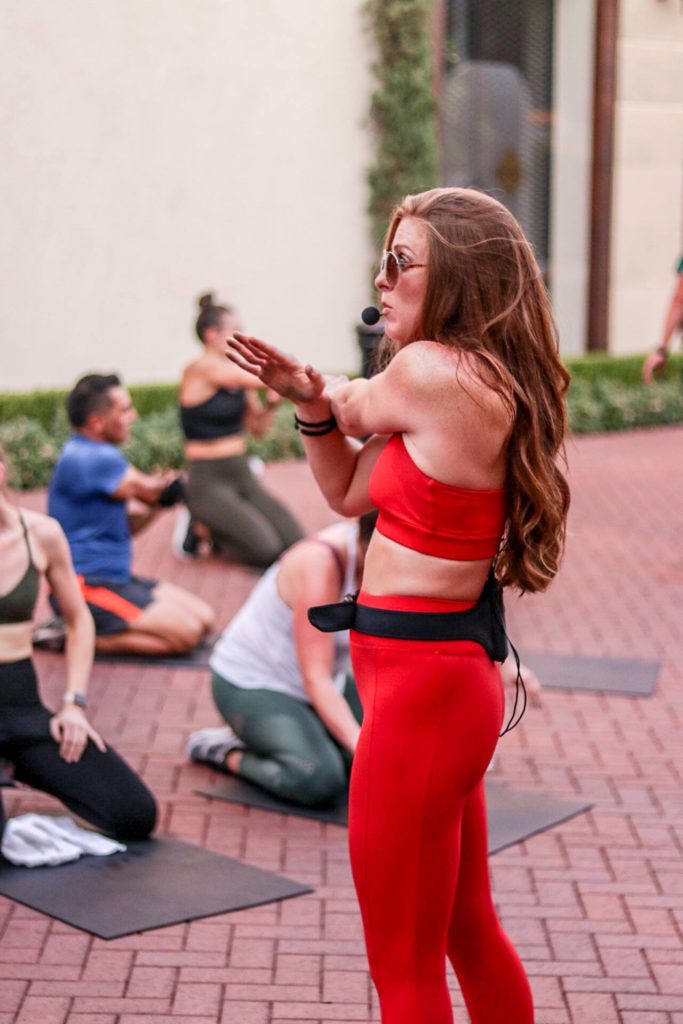
Burnout. It’s a word we all fear in the fitness world. The irony is burnout is what we go for by the end of our workout, the promise to yourself that you’ve pushed the limit. But, it’s the last thing you want overall. For those who hail the high of setting PR’s and early morning alarms for the day’s workout, the notion of “balance” in your fitness routine might sound like a bad word.
How Do You Know You’re Cruising Towards Burnout?
You know that feeling on Friday when you bend down to put your shoes on, and you feel a flash of tightness shoot through your hamstrings? Or, maybe for you it’s that total body fatigue that has you wondering what it was you did yesterday to make you so dog-tired today. It’s second-day sore on steroids, and it happens to those who have been crushing their weekly workouts like a beast. But if we’re beasts, why do we feel like bums by the weekend?
The quick science lesson involves a few key facts. Exercise promotes both oxidation and lactic acid, which are great if you’re body efficiently handles them at rest. But for those of us who turn a blind eye to “rest days,” we might not be handling it. Muscle fascia is overworked, energy systems are told they need to go into overhaul, and there’s not enough time for the body to rebuild before we go tearing up another workout (and possibly our body). This, along with the mental fatigue of hitting it hard day in and day out, can actually prevent us from making those gains we so desperately want.
So, Do I Have to Stop Working Out?
Heck no! I think carving out 45 minutes to 1.5 hour a day to get your blood flowing, endorphins running and sweat pouring is hardly something we need to cut back. I do, however, believe we must be intentional about how we spend this time if we expect our body to do it for the rest of our lives — not to mention if we expect ourselves to stay mentally alert and motivated throughout daily exercise. So, here are the top six strategies to avoiding burnout even after a week’s worth of intense exercise.

1. Know Your Why
One of my favorite sayings is “Motivation gets you going. Discipline keeps you growing,” (John Maxwell). There’s nothing that will test your motivation and discipline like closing in on a case of burnout. If you want to be able to exercise long into your life, you must learn the habit of discipline. Motivation considers your emotion, but discipline is rooted in behavioral patterns inspired by deep desire. When you don’t feel like working out, discipline does it anyway. I’ve found that discipline only surfaces when you are in tune with your deep desire to improve. Maybe your “why” involves being a healthy example for your family, encouraging others around you to persevere or finding purpose beyond the pain. Determining what drives your discipline is something constantly learned and improved upon.
2. Fuel the Machine
When we stop exercising to eat, and we start eating to exercise better, we notice huge changes in our output and endurance. Even the strictest diets Monday through Friday can suffer setbacks if the weekend is way out of whack. It’s essential for athletes to eat optimally on a daily basis and rely on the body’s ability to quickly bounce back after the occasional treat. Instead of dieting, it’s best to think of nutrition and supplementation as a lifestyle habit. Generally, we need more protein, electrolytes and water for our muscles to recover appropriately post-workout. For those who workout every day, it’s especially important to implement enough protein and possibly supplement with branched chain amino acids (BCAA’s) in order to speed up protein synthesis. However, nothing is more important to your nutrition than getting in enough water. Dehydration is one of the most subtle yet severe limiting factor to maximizing your fitness potential.
3. Facilitate Muscular Recovery
There are so many ways to intentionally assist your body to recover quicker, but most athletes wait until they’re either injured or in pain before implementing them. The silly part is that these tasks are usually super easy to do and super-effective. Foam rolling and myofascial releases can often offer instant relief to sore muscles or tight ligaments. Most of us have a foam roller in our living room but choose to use it less often than we should. Making a habit out of foam rolling every day can tremendously speed up the muscular recovery and prevent injury.
Epsom salt baths can reduce swelling and induce better sleep, which both aid in muscular recovery.
Stretching might seem like a no-brainer, but most of us could do a little more of it. Making time at the end of your workout to focus on mobility and flexibility not only helps your body recover, but if paired with some post-workout reflection, it also helps the mind punctuate the end of exercise with a positive mindset.
4. Set Goals
Tried and true, goal-setting in general can reap you many benefits, but in fitness, it can boost your motivation in the moment and drive your discipline (see tip #1). Coming around full circle, the reflection at the end of today’s workout can light the fire needed to start tomorrow’s. Discipline requires the pendulum swing between reflection and action. Once you’ve reflected on your “why,” assess where you are, how far you’ve come and where you want to go – and more so, who you want to be. Take action. Decide on the strategies and tactics necessary to be that person. Make your goals measurable yet attainable. Set yourself up with an accountability squad – people who encourage you to hit the mark instead of shaming you for not partaking in the Tuesday night glass of Merlot. Celebrate small victories like not sleeping in or packing your workout bag in your car. Even the smallest goals are goals achieved. Incremental improvements lead to lasting success.
5. Create Incentives
We wouldn’t be crushing our list of to-do’s if there wasn’t some incentive for doing them, right? Too often, we reward ourselves with food. And this is counteractive to our fitness goals, leaving us in a never-ending cycle of reward versus restriction or sometimes, exercise-addiction as we try to work off all those “treats” we earned. Like you make a list of goals, make a list of things you could do to reward yourself for hitting those goals. Maybe you finally buy those new running shoes, or maybe you book that vacation with the money you’ve saved from skipping all those weekly happy hours.
6. Include Variety
One of the easiest ways to avoid burnout and still create a daily habit of exercise is to keep your body and mind in a constant state of surprise. Changing up your daily workout is key to both physical gains (i.e. weight loss, fat loss, increased metabolism, muscle addition, etc) and mental alertness. Both the body and the mind benefit from workout variety and in doing so, you boost your joy and elongate your life span. When you plan your week’s workouts, be sure to include at least three different formats. It could be spin class on Monday and Thursday, HIIT class on Tuesday and Friday, and yoga on Wednesday and Saturday. You could run with that for a long time without getting burned out. And even within that schedule, you can expect a change in the class structure or if you’re working out on your own, you could definitely change it up. Educate yourself on different fitness formats and understand the purpose behind your actions. Knowledge is power, and when you have that power, you can stay the course.

About The Author: Amber is the Program Director for THE22, a strength and conditioning workout at ZYN22. Even an ISSA and AFAA group fitness specialist, nationally-qualified NPC fitness competitor, personal trainer and coach running her own business, she finds that being a wife and mom have given her the most applicable knowledge of training others to discover the strength hidden beneath the surface. Her hope is to inspire others to pursue their God-given potential and then pass it on. Follow Amber on Instagram, Facebook and Twitter or visit her website at www.ambermichellefit.com for more information on her coaching and class services.